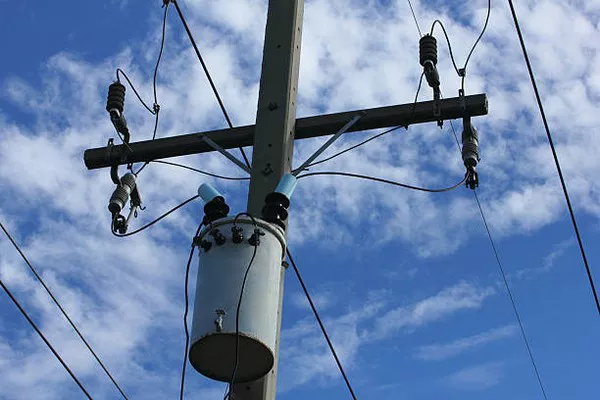Electrical transformers are ubiquitous in the modern world, silently powering our homes, industries, and infrastructure. These unassuming devices play a critical role in electrical distribution by stepping voltage up or down as needed, ensuring a stable and reliable power supply. The process of creating electrical transformers is a complex blend of science and craftsmanship, involving meticulous engineering and precision manufacturing techniques. In this article, we delve into the fascinating world of how electrical transformers are made, uncovering the steps, materials, and technologies that come together to bring us the electricity we often take for granted.
Understanding the Transformer’s Function
Before delving into the intricacies of transformer production, it’s essential to understand its fundamental purpose. Electrical transformers are devices designed to transfer electrical energy between two or more circuits through electromagnetic induction. This process involves two coils of wire, known as the primary and secondary coils, which are wound around a common magnetic core. The transformer operates on the principle that changing the current in the primary coil induces a voltage in the secondary coil, allowing for voltage transformation.
Step 1: Design and Engineering
The first crucial step in transformer manufacturing is the design and engineering phase. Engineers consider various factors, including the required voltage ratio, load capacity, and environmental conditions in which the transformer will operate. Detailed calculations are performed to determine the number of turns and wire size for both the primary and secondary coils. Additionally, the core material and its dimensions are carefully selected to ensure efficient energy transfer and minimal losses.
Modern transformer design heavily relies on computer-aided design (CAD) software and advanced simulation tools. These tools enable engineers to create precise 3D models of the transformer and simulate its performance under different conditions, optimizing its efficiency and reliability.
Step 2: Core Fabrication
The heart of an electrical transformer is its magnetic core, typically made from high-quality laminated steel sheets. These sheets are coated with an insulating varnish to reduce eddy current losses and minimize heat generation during operation. The core is then cut into specific shapes and assembled in layers to form the core structure. The careful stacking of laminations reduces energy losses and ensures the transformer operates efficiently.
Step 3: Coil Winding
The primary and secondary coils are wound using copper or aluminum wire, depending on the transformer’s size and application. The winding process is a precise and delicate operation that requires skilled craftsmen and specialized winding machines. The number of turns and the thickness of the wire are determined by the transformer’s design specifications.
Winding is typically performed in layers, with each layer insulated to prevent electrical shorts and improve coil integrity. Insulation materials such as paper, polymer film, or epoxy coatings are used to separate the turns and layers, ensuring electrical isolation and thermal stability.
Step 4: Insulation and Assembly
After the coils are wound, they are carefully insulated to prevent any electrical contact between the primary and secondary windings. Insulating materials, such as paper, Nomex, or epoxy resin, are applied to the coils. Multiple layers of insulation are often used to withstand high-voltage applications and harsh environmental conditions.
Once the coils are properly insulated, they are assembled onto the core. The primary and secondary coils are positioned around the core, and additional insulation is applied to prevent any electrical contact with the core or between the windings. This assembly process requires precision to ensure proper alignment and minimize the risk of electrical faults.
Step 5: Tank and Cooling System
The assembled transformer is placed inside a tank filled with insulating oil. The oil serves multiple purposes, including providing insulation, cooling, and protection against moisture and oxidation. The tank is sealed to prevent oil leakage and contamination.
To maintain optimal operating temperatures, transformers are equipped with cooling systems. These can be in the form of radiators, fans, or oil pumps that circulate the oil through cooling tubes. Maintaining the right temperature is crucial for transformer longevity and efficiency.
Step 6: Testing and Quality Control
Quality control is a critical aspect of transformer manufacturing. Before a transformer leaves the factory, it undergoes a series of rigorous tests to ensure it meets performance specifications and safety standards. These tests include:
- Turns ratio test: Measures the voltage transformation ratio of the transformer.
- Insulation resistance test: Checks the integrity of insulation materials.
- Impedance test: Determines the transformer’s ability to withstand short circuits.
- Load loss and no-load loss tests: Evaluate the transformer’s efficiency.
- Dielectric strength test: Ensures the insulation can withstand high voltage.
- Temperature rise test: Verifies the transformer’s cooling system effectiveness.
Step 7: Transport and Installation
Once the transformer passes all quality control tests, it is prepared for transportation to its final destination. Large transformers may require special transportation arrangements, such as trucks with reinforced trailers or even rail transport for exceptionally massive units.
Installation of transformers is a precise task, with careful consideration given to proper grounding, cooling, and electrical connections. Skilled technicians ensure that the transformer is integrated seamlessly into the electrical grid.
Conclusion
Electrical transformers are marvels of engineering and craftsmanship, enabling the efficient distribution of electricity across the globe. The process of creating these essential devices involves meticulous design, precise coil winding, careful assembly, and rigorous quality control. While transformers may remain hidden from view, their contribution to our modern way of life cannot be overstated. Understanding the intricate craft behind their creation allows us to appreciate the complexity and precision involved in ensuring a reliable power supply for our homes, industries, and infrastructure.

